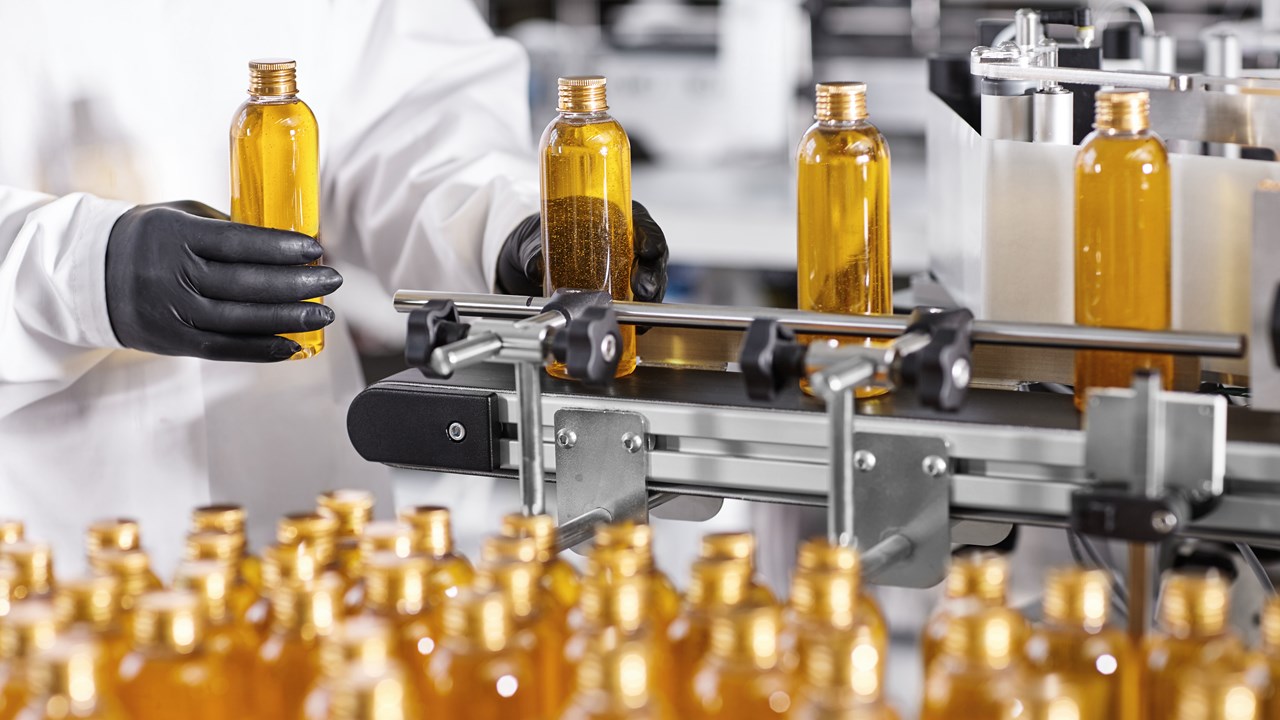Subscribe to Our Blog
Receive updates from our team as we share application notes, customer spotlights, educational tools, spectroscopy how-to’s, and more.

Navigating today’s industrial landscape is an ongoing challenge for manufacturers, with dynamic regulatory issues, emerging technologies and global competition placing a premium on innovation and creativity.
As a result, manufacturers seek better ways to manage their supply chains, reduce waste and off-specification product, and increase production yields. For some, even small savings and minor process improvements can be the difference between achieving success and building a strong brand or merely surviving and being an afterthought.
That’s where optical sensing solutions like spectrometers, cameras and multispectral sensors come in. Ocean Optics offers robust, scalable sensing tools and deep application knowledge, design and manufacturing expertise to help customers unlock the unknowns of industrial applications. Machine learning and custom algorithm development capabilities add another layer of insight.
For the uninitiated, spectroscopy is the study of how light interacts with matter. Spectral measurements involve shining light onto or through a sample and capturing a spectrum that shows the wavelengths of light removed by the sample through absorption and scattering. With information on how specific wavelengths of light interact with samples on a process line, manufacturers can identify samples in real time through a spectral fingerprint or determine the chemical composition and concentration of the components.
Inline monitoring of industrial processes enables manufacturers to manage production from raw materials to finished products. Optical sensing measurements can be made at critical stages throughout the process, allowing for quick intervention when parameters go beyond specified ranges. A more tightly controlled process leads to less waste and more consistent product quality.
Spectroscopy is well suited for industrial environments, where a wealth of information can be derived from instrumentation that monitors raw stock, processes and finished goods. Non-contact, non-destructive spectral measurements are easily deployed across a production line for process monitoring and control in real-time. Custom imaging systems can be integrated into process setups to extract high-contrast spectral information at visible and infrared wavelengths.
There’s more. Flexibility in the selection of detectors, light sources and sampling optics allows for deeper implementation of instrumentation into process flows, and makes it much simpler to optimize setups for multipoint sampling and redundant sensing.
Also, digital tools like artificial intelligence and machine learning can be applied to massive data sets or used for complex spectral analysis, providing users with real-time insight into sample quality, authenticity and other criteria.
In challenging industrial environments, with round-the-clock process lines and often harsh operating conditions, optical sensing adds the capability to monitor and control the process line in real time. Maintaining accurate and repeatable data requires smart, rugged instrumentation that can be seamlessly integrated into the existing process line (Figure 1).
 Figure 1: Fast-speed production line
Figure 1: Fast-speed production line
Circumstances that can affect measurements, such as wide temperature swings and the presence of dust and dirt, are addressed through rugged, industry-specific instrument design. The availability of inline process monitoring spectroscopy solutions empowers manufacturers to perform inline measurements continuously, eliminating the need to spot-check product offline.
Designing and implementing the optimum sampling interface is also critical to process line monitoring. For example, your choice of a sampling accessory for absorbance depends on various factors. Among the criteria to consider are the sample media (liquid or gas); the optical density of the sample; and whether the measurement will be made inline, at-line or off-line. For measurements in a process stream, you’ll need a transmission dip probe or flow cell that can be immersed in the stream.
Other scenarios may suggest different components and methods. For example, with inhomogeneous samples such as grains and feed, “dynamic” sampling is used. Dynamic sampling is a technique where rotational or linear motion is used to measure an average (representative) signal. This removes localized variance from the results, improving measurements.
Another consideration in industrial environments is sample availability – i.e., to create a useful correlation between spectra, one needs three important elements:
With optical sensing tools and insight from Ocean Optics, customers will be able to develop algorithms to derive various quality, grading and other parameters from their data.
Ocean Optics offers a range of modular spectroscopy solutions to solve measurement challenges and provide answers, regardless of the environment. Compact spectrometers are ideal for inbound inspection of raw materials, deployment on a production line for process monitoring, or use in quality assurance labs or at-line testing. Integration options range from individual spectroscopy components (spectrometers, light sources, sampling accessories) to customized subsystems and turnkey solutions including software or drivers to communicate with production equipment. Algorithm development and machine learning provide another level of insight.
Modular spectroscopy components are reliable and robust with excellent performance in even the harshest environments. Typical sampling configurations include non-contact measurements of surfaces, flow cells to measure slip streams, and dip probes placed directly into the process stream, enabling real-time data on process conditions and parameters.
Spectrometers designed for process monitoring have industrial connections and a range of communication protocols to interface with industrial equipment. Today’s spectral systems perform accurately and reliably, providing data integrity for traceability and quality assurance to meet process analytical technology requirements.
Real stories about the challenges, insights and solutions forged through technical expertise, creativity and peer partnership.

Receive updates from our team as we share application notes, customer spotlights, educational tools, spectroscopy how-to’s, and more.